- Date
March 28 to June 11, 2023
- Tuesday to Friday
from 10 am to 6 pm
- Saturdays
from 9 am to 7 pm
- Sundays and holidays
from 9 am to 6 pm
- Fee
free admission
- Early booking (optional)
- The exhibition has accessibility features

Visit the exhibition with the virtual tour 360º
DESIGN MUSEUM JAPAN: Investigating Japanese design
Eight Japanese creators from different areas of activity will have their research projects brought together in the exhibition “DESIGN MUSEUM JAPAN: Investigating Japanese design,” scheduled to be held at Japan House São Paulo from March 28 to June 11.
Underlining each of the investigations are experiences and stories collected in seven Japanese prefectures visited by internationally renowned creators, such as Akira Minagawa, Reiko Sudo, Tetsuya Mizuguchi, Tsuyoshi Tane, Kenya Hara, Koichiro Tsujikawa, Kumiko Inui, and Kumihiki Morinaga.
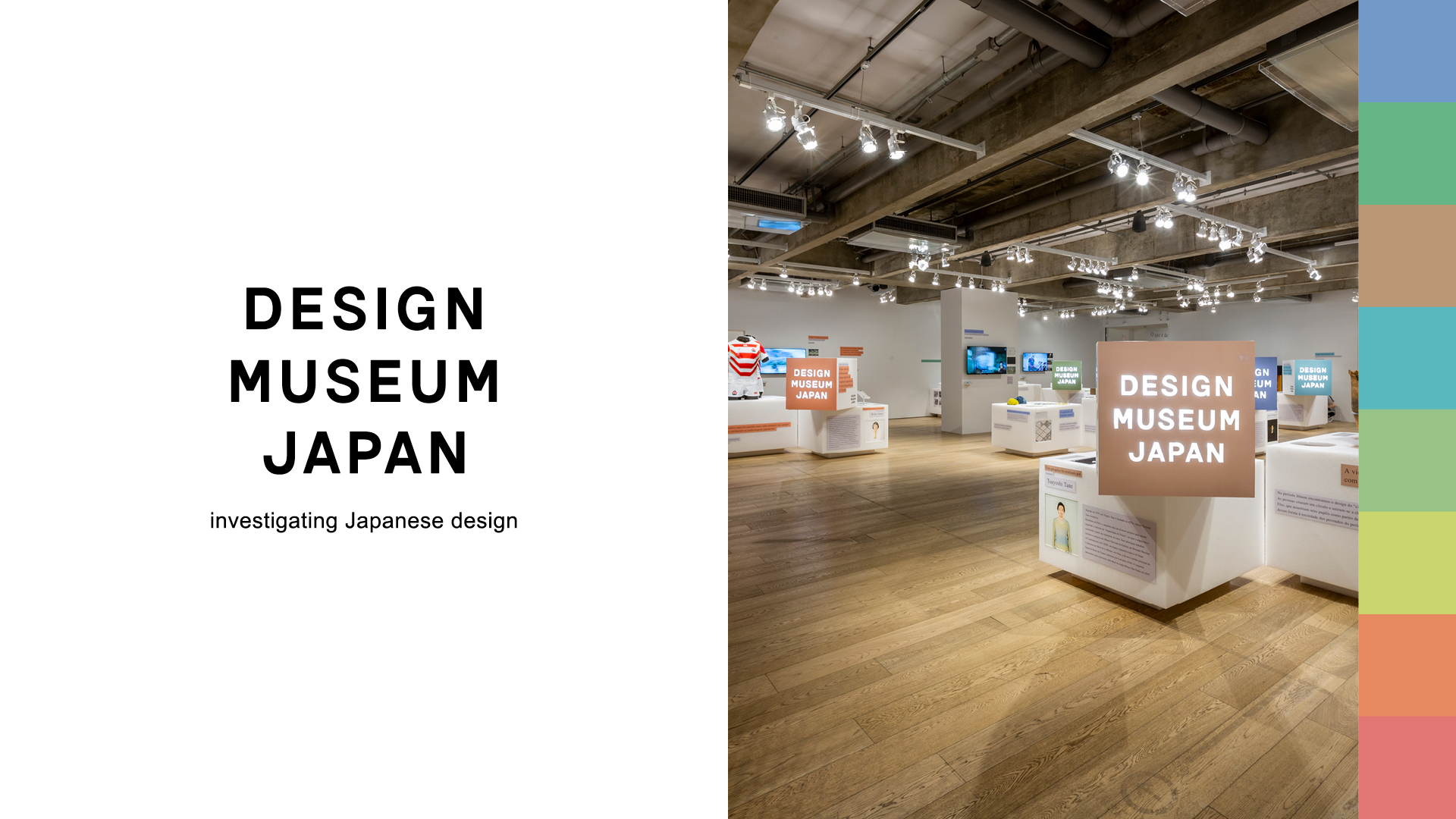
NHK + JH: global touring
Organized by NHK, Japan’s public broadcaster, together with NHK Promotions and NHK Educational, companies of the group, the exhibition is part of Japan House’s global touring project. It will begin in São Paulo, move on to Los Angeles, and then go to London.
“Whenever we think of Japanese culture, one of the first references that comes to mind is design, however there is currently no museum dedicated exclusively to this subject in Japan. In this sense, this exhibition plays an important role in bringing together different items present in Japanese daily life from the perspective of these renowned creators, which say a lot about timeless aspects of local life, the landscape, and the history of different regions of the country, showing that all it takes is a little curiosity to find design in almost everything that surrounds us. The idea is for DESIGN MUSEUM JAPAN to grow and for more prefectures and ‘design treasures’ to be included over time,” explains NHK head producer Kyoko Kuramori, who is in charge of the exhibition at JHSP.
To Japan House Cultural Director Natasha Barzaghi Geenen, “the stories showcased in this exhibition are a discovery of the riches of Japanese culture and daily life through the perspective of great artists. The DESIGN MUSEUM JAPAN concept is highly creative and can be an important source of inspiration in Brazil. We have in common a vast field of production in this area, as well as extremely creative people who are not necessarily known by the public at large or even recognized as designers. Promoting recognition and, in particular, the perception of design in everyday life is a way of valuing our local production and finding beauty around us, which is always a good lesson to learn. Furthermore, the opportunity to discover these hidden treasures in Japan is truly unique.”
Creators and creatures
Most of the creators have even been the subject of individual exhibitions or have had their work exhibited at JHSP, as is the case of Reiko Sudo (NUNO - Contemporary Textile Poetics contemporâneas), Akira Minagawa (The Art of RAMEN Donburi), Kunihiko Morinaga (ANREALAGE – A LIGHT UN LIGHT), Kenya Hara (Subtle - Subtleties on Paper and Architecture for Dogs), and Tsuyoshi Tane (Tsuyoshi Tane | Archeology of the Future - Memory & Vision ), the latter also responsible for the exhibition’s expography.
In addition to the spaces dedicated to each of the investigations, including those featuring videos produced especially by NHK on the research process, visitors will also have access to a collection of titles about the creators and the topics they address.
Finally, the exhibition has an interactive section, where visitors are invited to leave their impressions on “what is design for you?” and to contribute with examples present in Brazilian daily life that can be considered true “treasures” of each region of the country.
To dive deeper into the theme of the exhibition, JHSP will offer several events in its parallel program, including with NHK Educational head producer Kyoko Kuramoto and the architect Tsuyoshi Tane.
Accessible JHSP program
Within the JHSP Accessible program, the exhibition “DESIGN MUSEUM JAPAN: Investigating Japanese design” includes tactile resources, audio descriptions, and sign language.
![]()
About the work:
Akira Minagawa | designer
Yamagata dantsu: Design that sustains life in the snowy city (Yamagata/Yamagata Prefecture)
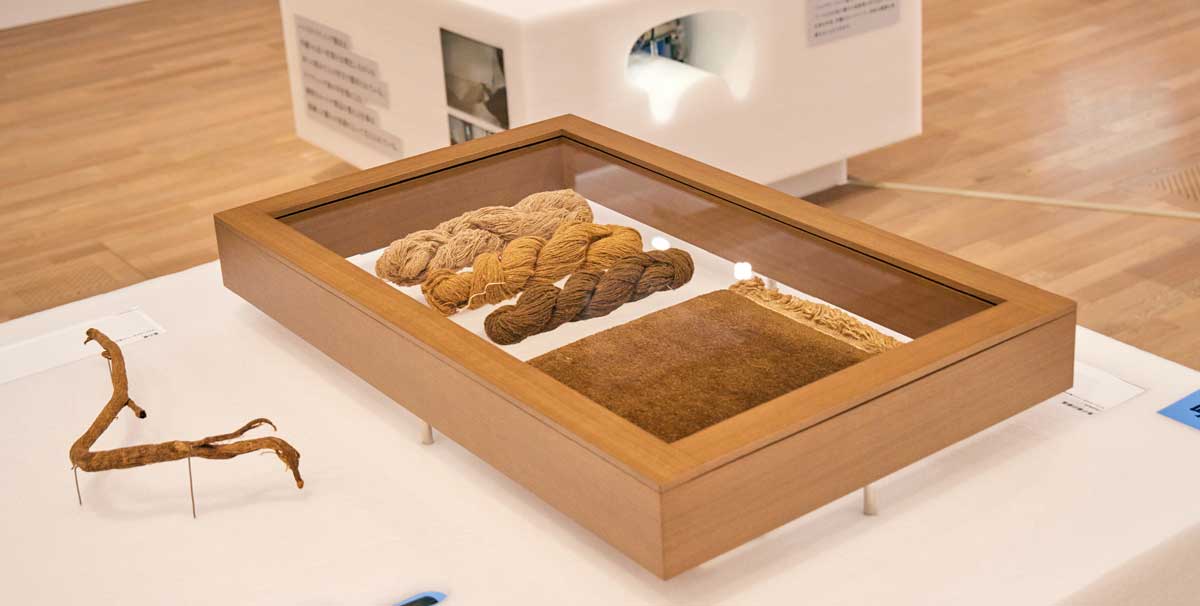
In his study, Akira Minagawa visited the factory “Yamagata Dantsu,” in the city of Yamanobe, which is located in the prefecture of Yamagata. The thick, hand-made tapestries are called “dantsu.” The region is covered with snow during winter and, as an alternative to support families during this period, residents sought the knowledge of the Chinese textile industry that had been introduced in the pre-war period. This technique has been improved to suit the Japanese custom of getting about barefoot. It is manual work that requires persistence, as it takes a day to weave a single centimeter.
The “design treasure” Minagawa found is the dantsu woven from the fiber of the root of kudzu, a Japanese native plant used to replace wool, which was a scarce material in the post-war period. “This item reflects people’s strong determination to produce dantsu. The quality of the artisanship is not just what you see, but something that resides within it,” notes Minagawa.
Reiko Sudo | textile design
Sportswear inspired by the “Andon” Lantern Festival of Toyama (Oyabe/Toyama Prefecture)
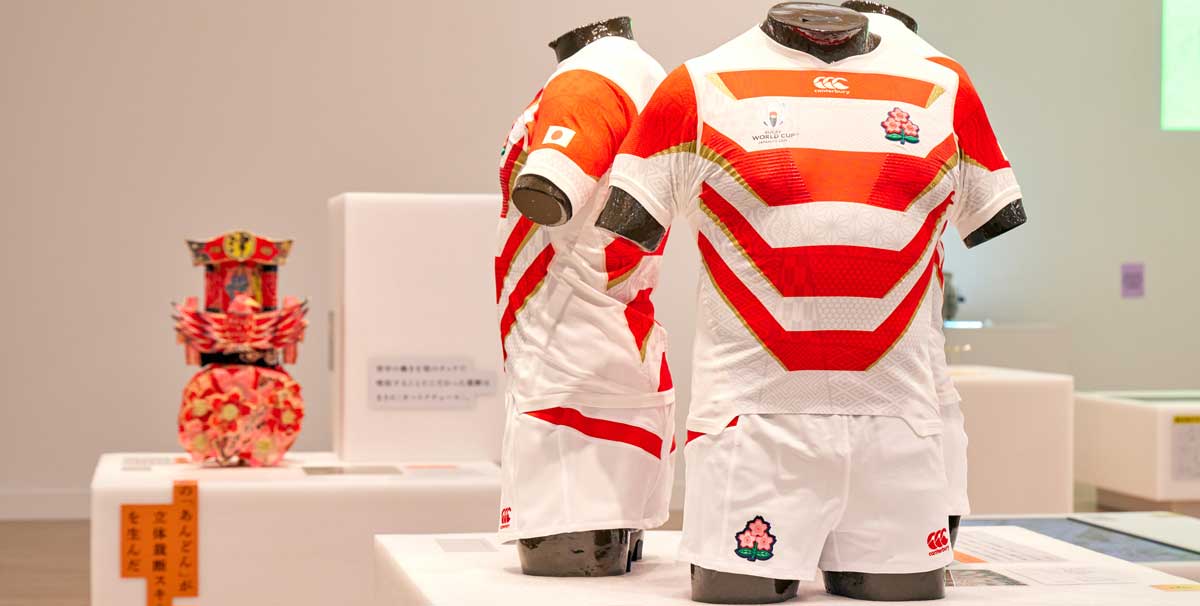
Reiko Sudo traveled to the Toyama Prefecture, where she became interested in the technology behind the 3D uniforms made for the Rugby Cup. There, she studied how the design of these clothes was inspired by the Andon Matsuri lantern festival, held in Toyama. To enhance the athletes’ performance, this fabric is made in a three-dimensional way, making the uniforms follow the contours of the athletes’ bodies. It is even said that the success of Japan’s 2019 Japan Rugby Cup team was thanks to the technology behind these uniforms.
Initially founded as a knitwear factory, the company ventured into the sportswear business in the 1970s. Along with the success achieved with skiing, it has taken on the challenge of developing clothes that support body movement. After a lot of trial and error, the inspiration that brought about success was the bamboo structure used to make the lanterns called Andon, which are essential during the Toyama Andon Matsuri festival, and which a local technician had made every year since he was a child. “He is a genius who can reproduce everything he sees,” explains Reiko Sudo.
While it is not possible to create a “bone,” it is possible to transform the fabric itself to create a garment that simulates a membrane covering the body. This reflection is the starting point for the development of sportswear based on an unprecedented concept. In the end, the haute couture concept of “creating clothes that fit every person” is behind the progress of sportswear history.
Tetsuya Mizuguchi | experience architect
TransAcoustic Piano: Design in which the traditional meets cutting-edge technology (Hamamatsu/Shizuoka Prefecture)
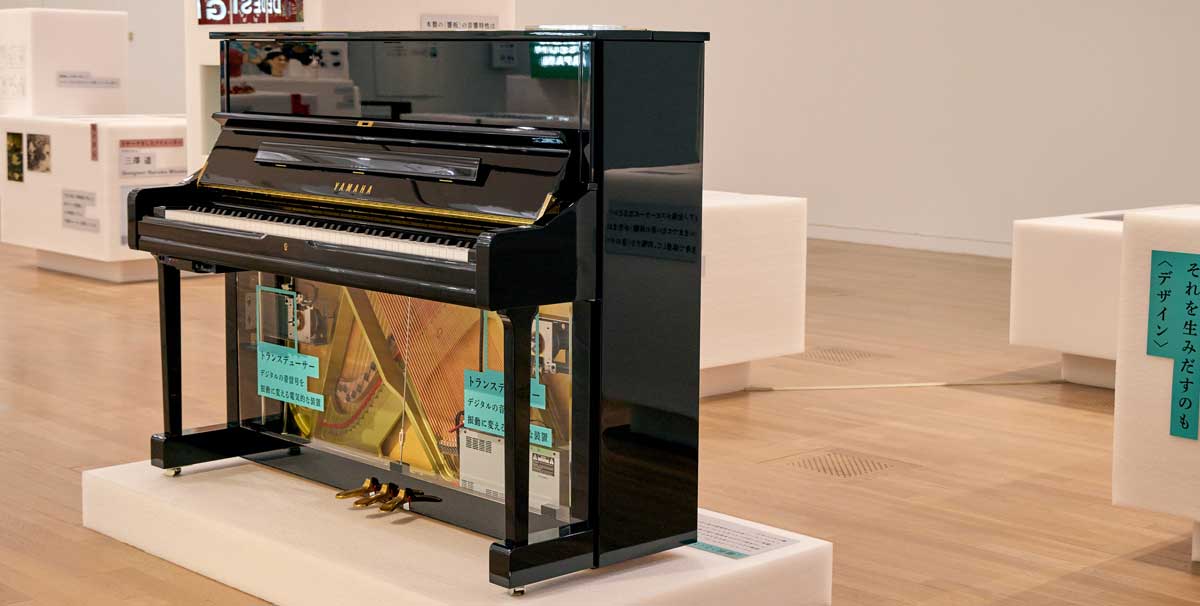
The pianos manufactured by Yamaha, in Hamamatsu, Shizuoka Prefecture, were the starting point for the study done by Tetsuya Mizuguchi. He researched the “TransAcoustic” piano, in which the instrument itself resonates its sound through the harmonic board, the “heart of the piano,” connected to an electronic device. These instruments come from the combination of handcrafted upright pianos with cutting-edge technology. In addition to the videos shot during the research process, visitors will be able to have an “unprecedented sound experience,” experiencing music not only with their ears, but with their whole body.
Tsuyoshi Tane | architect
Jomon period village: Design existed 10,000 years ago in inhabited spaces (Ichinohe/Iwate Prefecture)
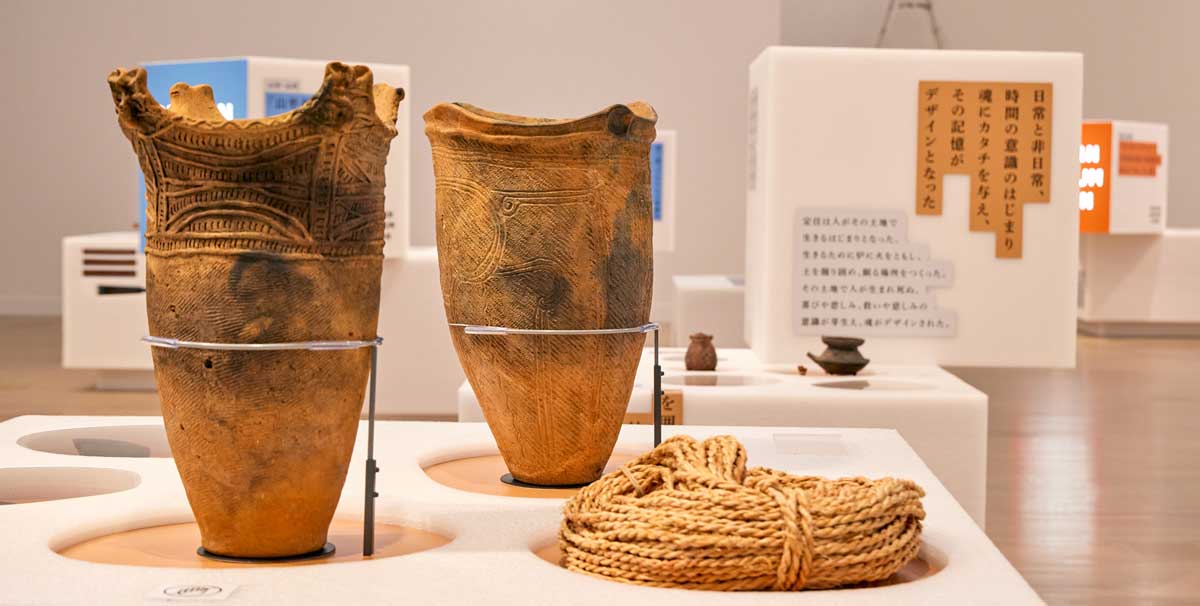
Tsuyoshi Tane conducted his research at the Goshono Jōmon Museum, which is installed in the archaeological site of Goshono, in the city of Ichinohe, Iwate prefecture. The excavation of this site gained strength in the Heisei period, and the archaeological research there has been making great leaps thanks to new technologies and reconstruction. The exhibition investigates “design” developed around 10,000 years ago – when human beings ceased to be nomads and settled in one place –, through videos, photographs, and pieces of pottery.
Kenya Hara | graphic designer
Helix: The unshakable form born of rationality (Kurashiki, Okayama Prefecture)
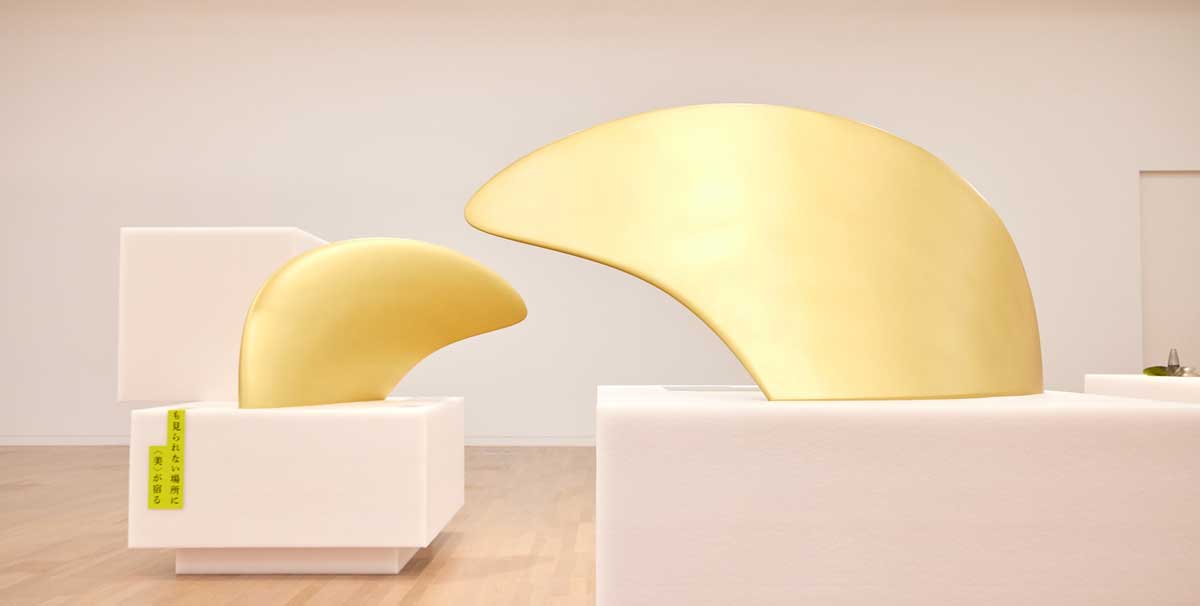
Kenya Hara’s research was conducted in his hometown in Okayama Prefecture. He visited a company that manufactures ship propellers, which developed through the Setonaikai maritime traffic. Larger-sized propellers reach eight meters in diameter, but the final adjustments to surface curvature are made by craftsmen who work on the scale of the millimeter.
“I was surprised to learn that the work that makes something so enormous precise is done by the human hand,” remarked Hara.
“In addition, we can never see the propeller while it is in use. It is an object that was made for a purely mechanical purpose: To transform rotational force into propulsion. However, its shape is infinitely beautiful,” he remarks getting emotional. “It is not about individual expression, rather about an unshakable form without any unnecessary element that keeps pace with rationality and the laws of nature,” he adds.
Koichiro Tsujikawa | videomaker
“Buchigoma and the various spinning tops that expand from it,” toys are the first design object that human beings come into contact with (Himeji / Hyōgo prefecture)
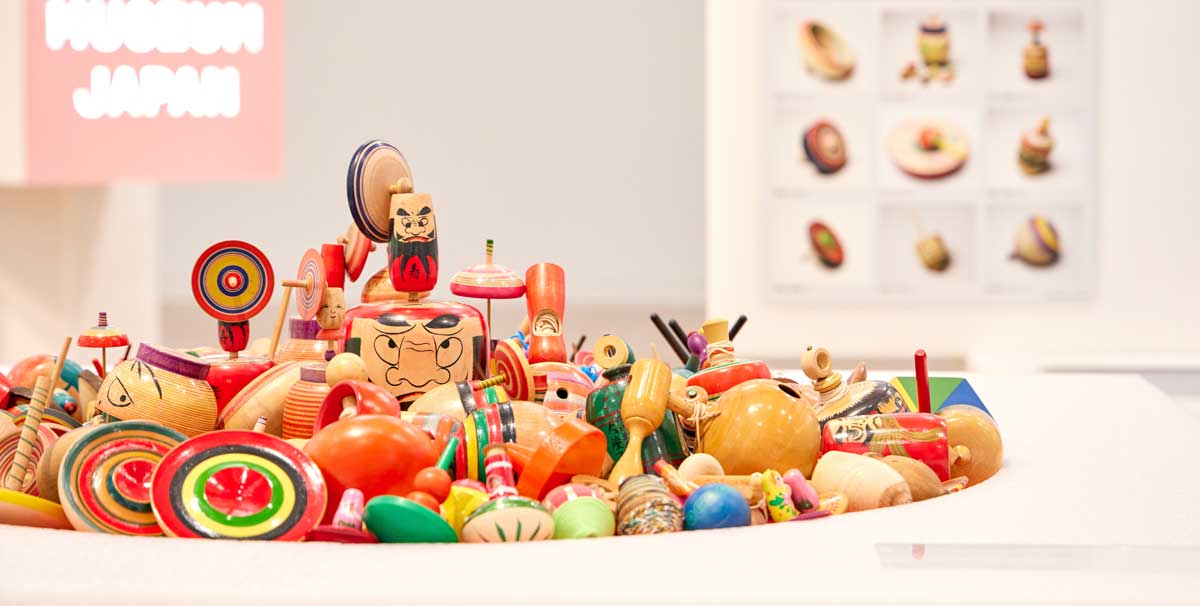
Based on the idea that “toys are the first object of design that human beings have contact with in life,” the video maker Koichiro Tsujikawa explores the Toy Museum of the Hyōgo region, getting to know the spinning tops that emerged and were developed in various places around the world. In the exhibition you can watch the video shot during this research project and the “Techchan to Koma,” which portrays the encounter with the spinning top and the different games, in addition to the spinning tops that are part of the collection belonging to the Toy Museum.
Kumiko Inui | architect
Small landscapes: Seeing design in the accumulation of anonymous solutions (Fujinomiya and Izu/Shizuoka Prefecture)
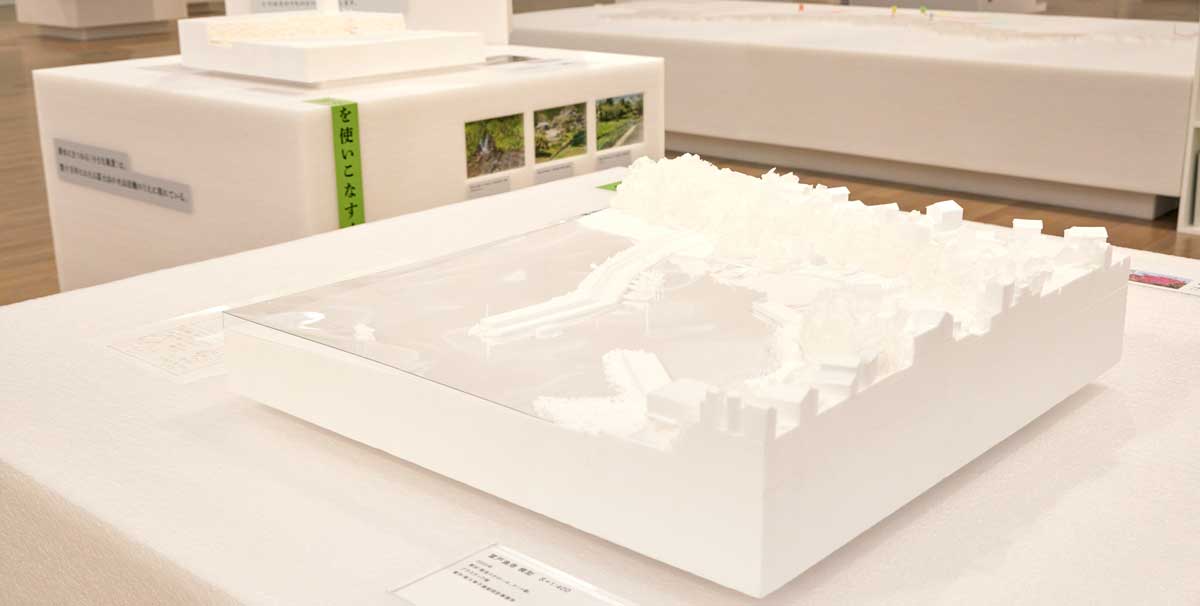
Architect Kumiko Inui’s projects are based on “learning through the small landscapes.” She seeks out and photographs the “landscapes that ordinary people create through practical solutions,” such as places and customs that people have an affection for. The elements that make up an everyday landscape, such as small huts in rural areas or benches found on the streets, are the subject matter of her research.
“Sometimes I feel something different when I see how a simple trash can is positioned. Other times, I am drawn to the combination of colors and materials that happened by chance. The human warmth of those who live in that region and the affection for the place where they live create the ‘commons,’ and by protecting them, this irreplaceable place becomes an ‘experienced place,’” remarks Inui, who adds that “The ideas and inspirations for my architecture come from there.”
For the DESIGN MUSEUM JAPAN exhibition, Inui sought out the “small landscapes” at water-related sites in Shizuoka, featuring the ‘Waters of Fujinoniya, Izu Harbor, and of the Atagawa Natural Hot Springs.’
Kunihiko Morinaga | fashion designer
Design that produced a strong feeling of protecting people who wear Haburagin, the costume of the noro (Amani/Kagoshima Prefecture)
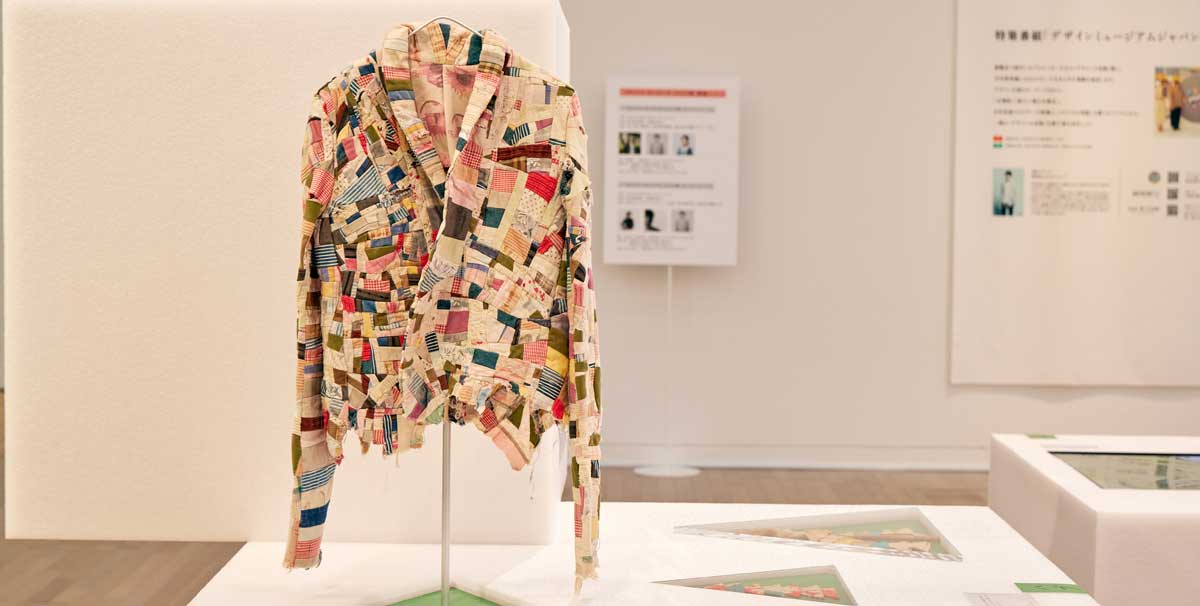
In the Kagoshima Prefecture, in Amani, Kumihiko Morinaga researched the garments of noro priestesses, which are called haburagin. Made with scraps of fabric with different properties (plain, printed, silk, or cotton) the design was something that went beyond the concept of patchwork (a sewing technique made with scraps), Morinaga’s professional starting point. An original copy of the garment and related documents will be on display at the exhibition, presenting “design with a strong sense of protecting the people who wear it.”
--
Service:
Exhibition “DESIGN MUSEUM JAPAN: Investigating Japanese design”
Co-organized by Japan House São Paulo, NHK, NHK Promotion, and NHK Educational in collaboration with DESIGN MUSEUM
Period: March 28 to July 11, 2023
Cost: Free admission
The exhibition has accessibility resources (Sign language, audio descriptions, tactile elements).
Early booking (optional): https://agendamento.japanhousesp.com.br
Japan House São Paulo | second floor
Location: Avenida Paulista, 52 – Bela Vista, São Paulo
Opening hours:
Tuesday to Friday, from 10 am to 6 pm
Saturdays, from 9 am to 7 pm
Sundays and holidays, from 9 am to 6 pm.
Japan House São Paulo remains closed on Mondays, without exception, including on holidays.




